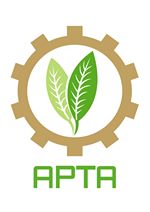Development by Product of Mung Bean as Agroindustrial Product for Liquid Smoke and Charcoal Briquettes
Mahmudun Ainuri(1*), N Fatmawati(2), F A Permana(3), A N Jatu(4)
(1) Department of Agroindustrial Technology, Faculty of Agricultural Technology, Universitas Gadjah Mada, Indonesia
(2) Department of Agroindustrial Technology, Faculty of Agricultural Technology, Universitas Gadjah Mada, Indonesia
(3) Department of Agroindustrial Technology, Faculty of Agricultural Technology, Universitas Gadjah Mada, Indonesia
(4) Department of Agroindustrial Technology, Faculty of Agricultural Technology, Universitas Gadjah Mada, Indonesia
(*) Corresponding Author
Abstract
Keywords
Full Text:
PDFReferences
Abimanyu, A., D. Yudiastono, Nawang A., Y. Milanti, and Fatmawati. 2009. Utilization of Leather Green Beans in the Shape Briquette for Alternative Fuels Renewable. Reports Scientific Work Student, Department of Education and Sports Yogyakarta, unpublished.
Anggraini, I. W. 2008. Green Beans Leather Effectiveness Extract and Coconut Water on the Growth of Sansevieria trifasciata. Thesis. Surakarta: UMS.
BPPH, 1994. Charcoal Briquette Quality Standards in Some Countries. The Institution of Forest Research and Development, Indonesia.
Darmadi, P., 1999. Potential Browning Fractions Coconut Shell Liquid Smoke. Proceedings of the National Seminar on Food Technology and Nutrition. Yogyakarta.
Darmadi, P., Supriyadi, and C. Hidayat, 1998. Production of Solid Waste Liquid Smoke Spice Way pyrolysis. Agritech, Volume 19 (1): 11-15.
Darmadi, P., 1996. Production of Liquid Smoke and Antimicrobial Properties, Antioxidant, and Sensory. Independent Research Report DPP-UGM, Yogyakarta.
Darmadi, P., 1996a. Activities Anti Bacteria Liquid Smoke is in Production of Various Agricultural waste. Agritech, Volume 16 (4): 19:22.
Disperindagkop, 2010. Yogyakarta in Number. Yogyakarta.
Girard, J. P., 1992. Technology of Meat and Meat Products. New York: Ellis Harwood. Mega, J.A., 1987. Smoke and Food Processing. Florida: CRC Press. Inc.
SNI., 2011. Charcoal Briquette Quality Standards According SNI 01-6235-2000. Indonesian National Standard.
Sjostrom, E., 1995. Wood Chemistry Basics and Usage. Yogyakarta: Gadjah Mada University press.
Santoso, P.B., 2005. Mokroshoft Statistical Analysis with Excel and SPSS. Yogyakarta: Andi press.
Subagyo, A., 2007. Feasibility Study, Theory and Applications. Jakarta: PT. Gramedia.
Wayan Sentanu, DS., 2009. Effect of adhesive composition and pressure of compression of the combustion characteristics of the Biobriquettes from the shells of seeds Nyamplung (Caophyllum Inophyllumil). Thesis. Yogyakarta: Universitas Gadjah Mada.
Yuwono, J., 2009. Effect of Addition Ingredients Igniter at Charcoal Briquette from Waste Powder Teak. Thesis. Yogyakarta: Universitas Gadjah Mada.
Article Metrics
Refbacks
- There are currently no refbacks.
Copyright (c) 2021 Mahmudun Ainuri, N Fatmawati, F A Permana, A N Jatu

This work is licensed under a Creative Commons Attribution-ShareAlike 4.0 International License.









